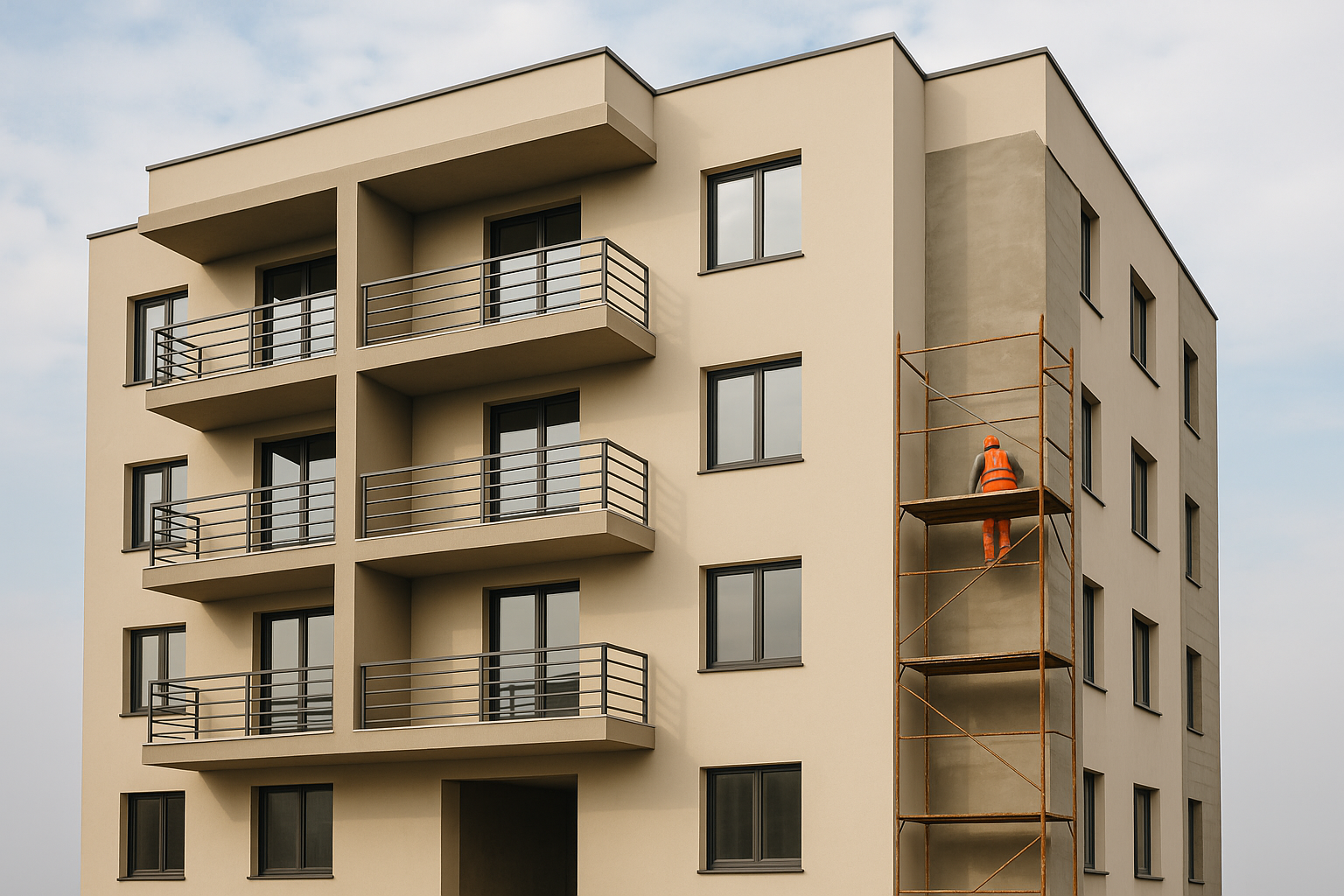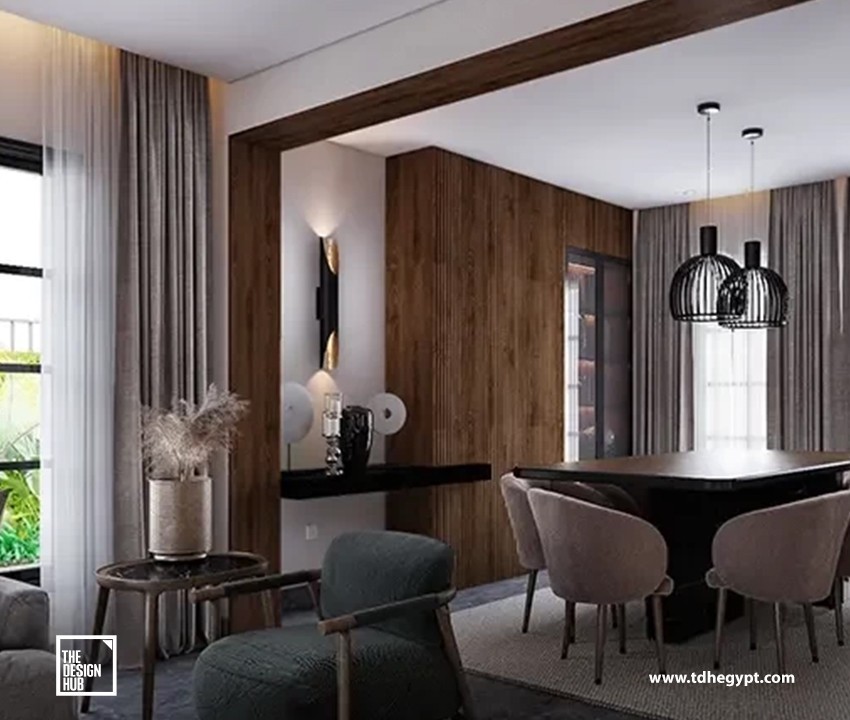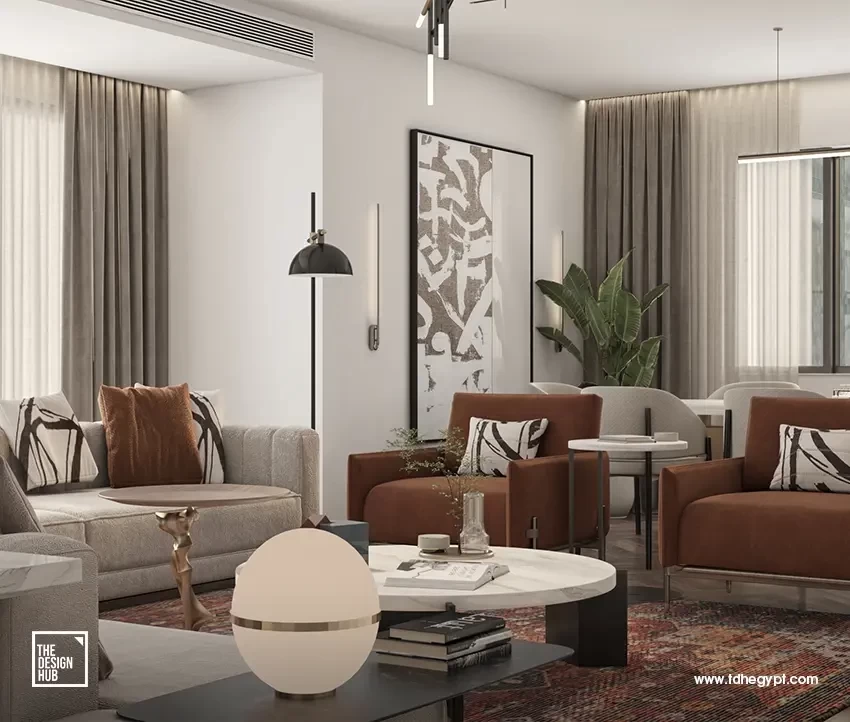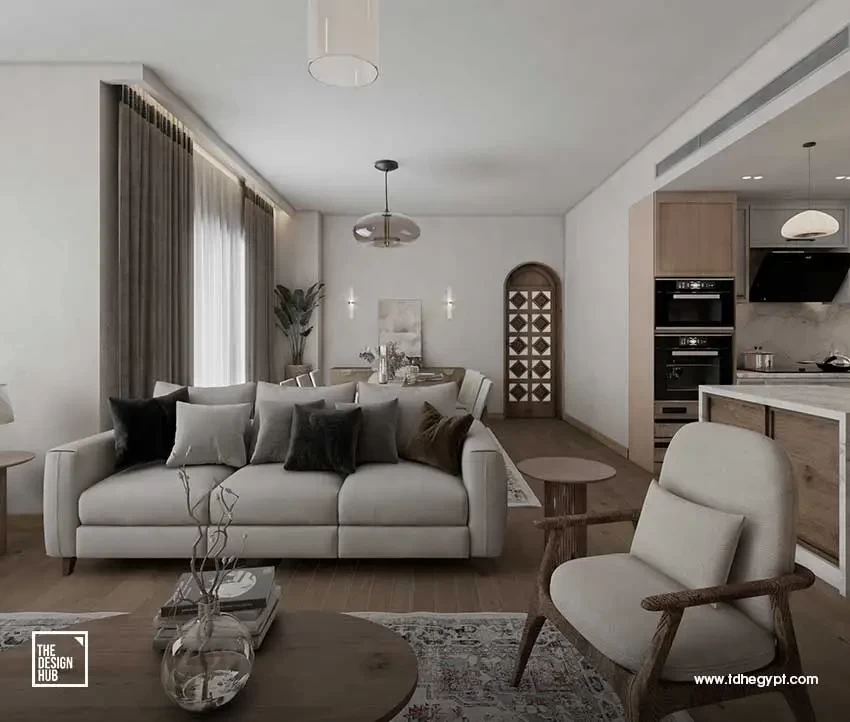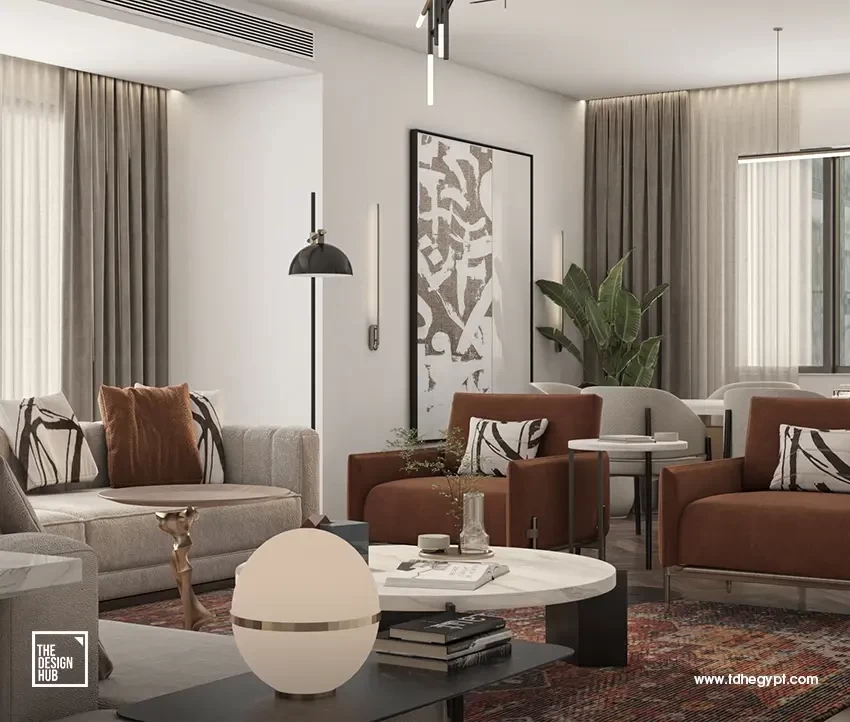

- Architecture, Intorior
Types of Exterior Finishes: Elevating the Beauty and Protection of Your Building
When it comes to architectural design and construction, one cannot overlook the importance of types of exterior finishes, which represent the first visual impression of any building—whether residential, commercial, or administrative. Exterior finishes play a vital role not only in enhancing the aesthetic appeal but also in protecting the structure from environmental factors such as rain, humidity, and extreme temperatures.
In this article, we explore the most popular types of exterior finishes, their unique features, the key factors influencing the choice of the right type, and the essential role of finishing offices and the expertise of the best finishing and decoration companies in executing such projects with precision and professionalism.
What Are Exterior Finishes?
Exterior finishes refer to the final layers applied to the external facades of buildings after the completion of core construction work. These layers include paints, stone or ceramic claddings, insulation works, and other materials that enhance the building’s outward appearance while offering protection against weather conditions.
The choice of exterior finishes varies based on the building's purpose—there are styles more suited to villas and homes, while others are ideal for commercial malls or administrative towers.
Types of Exterior Finishes
The selection of exterior finishes depends on the building’s function, project budget, and the owner’s taste. Below are the most common types:
1. Exterior Paint Finishes
These are among the most widespread due to their affordability, ease of application, and maintenance. They rely on weather-resistant paints that withstand sun and humidity and come in various colors to suit every taste. This type is particularly popular in residential and apartment buildings.
2. Natural Stone Finishes
Stone cladding offers a luxurious and durable look, using materials like Hashimi stone, Mica, or sandstone. These finishes are highly resilient against harsh weather conditions, making them ideal for villas and upscale buildings.
3. Marble and Granite Finishes
Frequently used in premium buildings and main entrances, marble is known for its elegant shine, while granite is favored for its strength and durability. These materials are excellent choices for high-end architectural projects.
4. Ceramic and Porcelain Finishes
While often seen indoors on floors and walls, ceramic and porcelain are also used in certain exterior applications, especially in malls and commercial buildings. They are easy to clean and come in a variety of styles and patterns.
5. Wood-Plastic Composite (WPC) Finishes
WPC is widely used in contemporary and modern facades due to its high resistance to moisture and weather. It provides a warm, natural look and is commonly applied to rear facades or balconies.
6. Glass and Metal Finishes
A popular choice for administrative buildings and commercial towers, glass and metal create a sleek, modern appearance. Special care is taken to use heat-insulating and shatter-resistant glass.
7. Stamped or Colored Concrete Finishes
This technique is used extensively on outdoor surfaces such as fences, walkways, and pavements, where concrete is given a decorative texture or color for a distinctive look.
Factors to Consider When Choosing Exterior Finishes
Before selecting an exterior finish, several key factors should be considered:
-
The purpose of the building: residential, commercial, or administrative.
-
The climate of the region.
-
The available budget.
-
The desired architectural style.
To ensure a high-quality finish, it's always best to consult experienced finishing offices with a proven track record in the field.
The Role of Top Finishing and Decoration Companies
The success of any exterior finishing project depends heavily on the capabilities of the best finishing and decoration companies, which boast specialized teams and highly skilled engineers. The process begins with a thorough assessment of the building’s facade and requirements, followed by material selection, implementation, and continuous monitoring and maintenance.
These companies also ensure adherence to deadlines and delivery of top-quality work, which positively impacts the building’s appearance and market value.
Finishing Prices in Egypt
Exterior finishing prices in Egypt vary depending on the chosen type, material quality, and facade area. For example:
-
Exterior paint finishes typically cost between EGP 50 to EGP 120 per square meter.
-
Stone finishes may range from EGP 250 to EGP 500 per square meter.
-
Luxury finishes like marble or glass can exceed EGP 1,000 per square meter based on the material and specifications.
This is where experienced finishing offices shine by offering transparent pricing tailored to your budget—without compromising on quality.
How to Choose the Right Finishing Office
When searching for a reliable finishing office, be sure to check:
-
Their portfolio of previous projects
-
Customer reviews
-
Clear contracts
-
Availability of warranties on materials and workmanship
It’s always preferable to collaborate with one of the best finishing and decoration companies, such as Design Hub, which offers a full package—from design to final delivery.
Conclusion
Exterior finishes are more than just decorative layers—they’re the first line of defense against weather and environmental changes. With a wide variety of exterior finishing types available in the Egyptian market, it's crucial to work with a trusted finishing office like Design Hub to achieve the best outcome.
Choose the right finish for your building and begin your transformation journey with one of the top finishing and decoration companies that combine quality, innovation, and dedication.
تختلف الأسعار حسب نوع التشطيب والخامات المستخدمة، لكنها تبدأ من حوالي 50 جنيهًا للمتر في الدهانات، وقد تصل إلى أكثر من 1000 جنيه للمتر في التشطيبات الفاخرة مثل الرخام أو الزجاج.
External finishes add to the building its final aesthetic shape and protect it from environmental factors such as heat, humidity, rain, and corrosion, which increases its shelf life and maintains its market value.
Natural stone finishing gives the building a luxurious and durable look, while finishing with paints is less expensive and easier to implement and maintain, but it is less resistant to weather factors in the long term.

